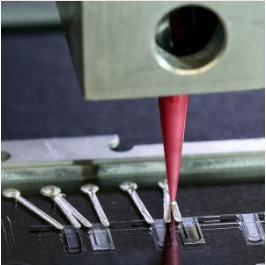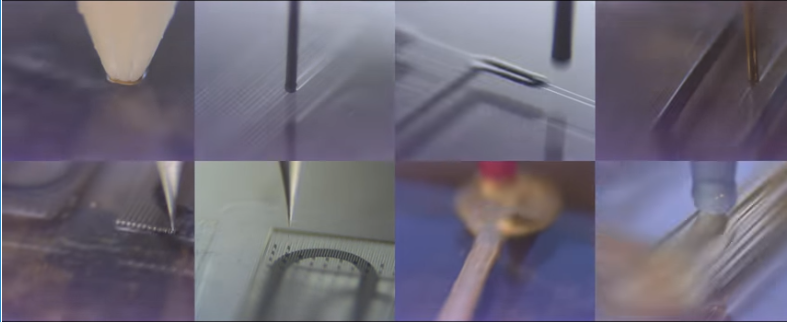Harvard Researchers Create 3D Printed Heart-on-a-Chip, Potentially Eliminating Need for Animal Testing in the Future
 I’ve always hated the idea of animal testing. I try to buy products that don’t test on animals, though sometimes it’s hard to find reliable information. When it comes to animal testing for medical purposes, however, I understand that it’s necessary for the development of drugs and technologies that may eventually save the lives of thousands of human beings – but thanks to 3D printing, even medical animal testing may soon become a thing of the past.
I’ve always hated the idea of animal testing. I try to buy products that don’t test on animals, though sometimes it’s hard to find reliable information. When it comes to animal testing for medical purposes, however, I understand that it’s necessary for the development of drugs and technologies that may eventually save the lives of thousands of human beings – but thanks to 3D printing, even medical animal testing may soon become a thing of the past.
A recent technology that has emerged as an alternative to animal testing is known as “organ-on-a-chip” technology. Organs-on-chips, aka microphysiological systems, are small cell culture chips that mimic the structure and function of tissue, allowing researchers to study the effects of drugs on lungs, hearts, kidneys and other organs without needing an actual organ to perform tests on. The issue with the technology thus far, however, is that it’s expensive and time-consuming to collect the data necessary for the chips and then to fabricate them.
 Typically, organs-on-chips are created in a complicated, multiple-step lithographic process, while collecting data requires the use of microscopy or high-speed cameras. Researchers at Harvard University, however, have developed a new method for fabricating organs-on-chips: 3D printing. A recently published paper entitled “Instrumented cardiac microphysiological devices via multimaterial three-dimensional printing” describes how a research team created the first-ever entirely 3D printed organ-on-a-chip – a heart – with integrated sensing.
Typically, organs-on-chips are created in a complicated, multiple-step lithographic process, while collecting data requires the use of microscopy or high-speed cameras. Researchers at Harvard University, however, have developed a new method for fabricating organs-on-chips: 3D printing. A recently published paper entitled “Instrumented cardiac microphysiological devices via multimaterial three-dimensional printing” describes how a research team created the first-ever entirely 3D printed organ-on-a-chip – a heart – with integrated sensing.
“This new programmable approach to building organs-on-chips not only allows us to easily change and customize the design of the system by integrating sensing but also drastically simplifies data acquisition,” said Johan Ulrik Lind, postdoctoral fellow at the Harvard John A. Paulson School of Engineering and Applied Sciences (SEAS) and a researcher at the Wyss Institute for Biologically Inspired Engineering at Harvard University.
The team developed six printable inks that integrated soft strain sensors into the micro-architecture of the tissue. They then 3D printed the materials into a cardiac microphysiological device, aka a heart-on-a-chip, with integrated sensors in one continuous procedure.
“We are pushing the boundaries of three-dimensional printing by developing and integrating multiple functional materials within printed devices,” said Jennifer Lewis, Hansjorg Wyss Professor of Biologically Inspired Engineering and a Core Faculty Member at the Wyss Institute. “This study is a powerful demonstration of how our platform can be used to create fully functional, instrumented chips for drug screening and disease modeling.”
The heart-on-a-chip contains several wells that each contain separate tissues and integrated sensors, which allows the researchers to study multiple cardiac tissues at one time. The Harvard team has already carried out several drug studies as well as longer-term studies of gradual changes in the contractile stress of cardiac tissue, which can take place over the course of several weeks.
“Researchers are often left working in the dark when it comes to gradual changes that occur during cardiac tissue development and maturation because there has been a lack of easy, non-invasive ways to measure the tissue functional performance,” said Lind. “These integrated sensors allow researchers to continuously collect data while tissues mature and improve their contractility. Similarly, they will enable studies of gradual effects of chronic exposure to toxins.”
 3D printing organs-on-chips is not only faster and less expensive, it gives scientists a lot more design freedom, potentially enabling them to design organs-on-chips that mimic organs with specific diseases, or even those that match an individual person’s cells – making the technology not only an alternative to animal testing, but a much more effective one.
3D printing organs-on-chips is not only faster and less expensive, it gives scientists a lot more design freedom, potentially enabling them to design organs-on-chips that mimic organs with specific diseases, or even those that match an individual person’s cells – making the technology not only an alternative to animal testing, but a much more effective one.
“Our microfabrication approach opens new avenues for in vitro tissue engineering, toxicology and drug screening research,” said Kit Parker, Tarr Family Professor of Bioengineering and Applied Physics at SEAS and a Core Faculty Member of the Wyss Institute. “Translating microphysiological devices into truly valuable platforms for studying human health and disease requires that we address both data acquisition and manufacturing of our devices. This work offers new potential solutions to both of these central challenges.”
The research was supported by the National Science Foundation, the National Center for Advancing Translational Sciences of the National Institutes of Health, the US Army Research Laboratory, and the Harvard University Materials Research Science and Engineering Center (MRSEC). The study’s authors include Parker, Lind, Lewis, Travis A. Busbee, Alexander D. Valentine, Francesco S. Pasqualini, Hongyan Yuan, Moran Yadid, Sung-Jin Park, Arda Kotikian, Alexander P. Nesmith, Patrick H. Campbell, and Joost J. Vlassak. Discuss in the Heart on a Chip forum at 3DPB.com.
[Source: Harvard University]
Subscribe to Our Email Newsletter
Stay up-to-date on all the latest news from the 3D printing industry and receive information and offers from third party vendors.
You May Also Like
3D Printing Unpeeled: Biofuel Waste to Filament & Sustainable Photopolymers
I can’t ever remember a day with so many potentially high impact news stories have come out. In one story, we all know that there are problems with the safety...
Finnair Hires AM Craft to 3D Print Plastic Parts for Aircraft Interiors
Riga-based AM Craft, a supplier specialized in 3D printing aviation components and certified under EASA Part 21G, announced a significant achievement today. The company will assist in upgrading Finnair’s A320...
3DPOD Episode 198: High Speed Sintering with Neil Hopkinson, VP of AM at Stratasys
Neil Hopkinson, a pioneering 3D printing researcher, played a pivotal role in developing a body of research that is widely utilized today. He also invented High Speed Sintering (HSS), also...
3D Printing Webinar and Event Roundup: May 12, 2024
Webinars and events are picking up in the AM industry this week! ASTM International continues its Professional Certificate Course and Stratasys continues its advanced in-person trainings, while 3D Systems is...

































